Valtellina, a stage in a paradise
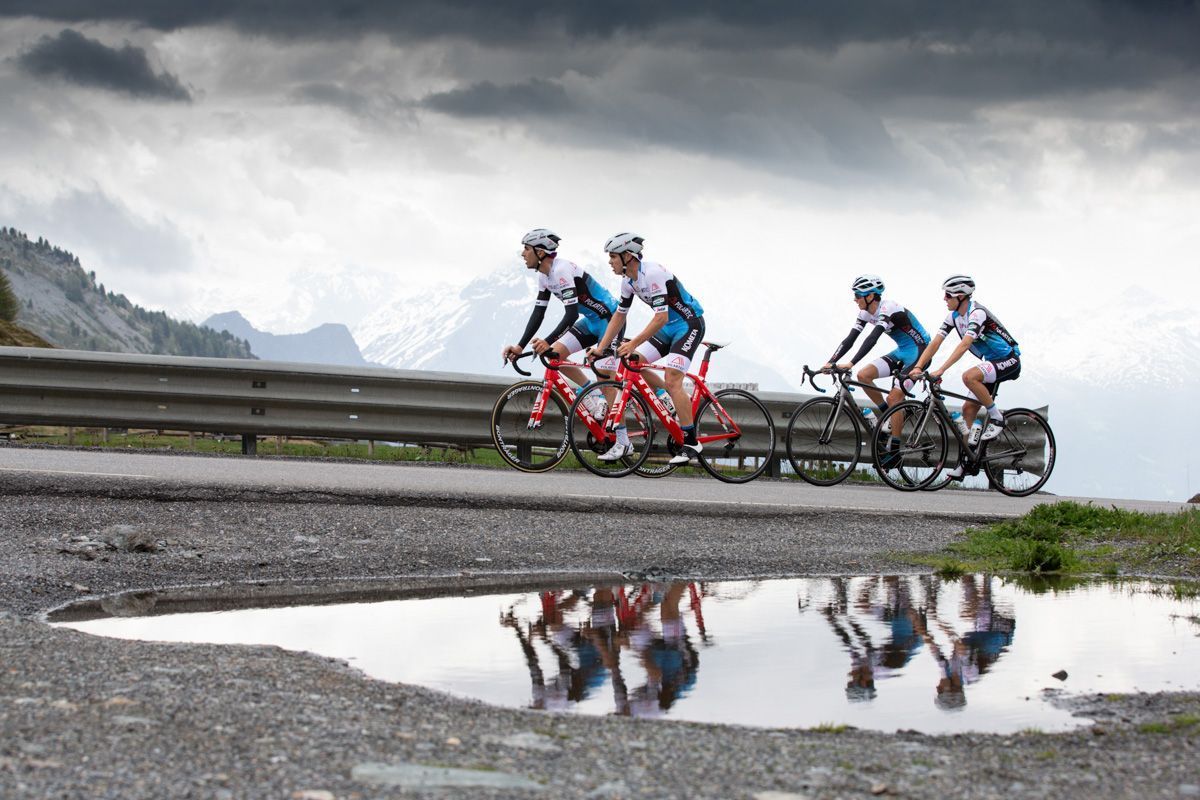
Few, very few sports allow fans to enjoy their hobby in the same settings where high competition takes place. A differential fact, not unique, of cycling. But with the bike, at least, it’s different, majestic. The greatness of the natural environment, its mountains, its landscapes, within the reach of our senses and our efforts. There are many paradises for cycling, but with the conditions of the Valtellina the amount is reduced. Whether it’s for mountain biking or road biking, even for more recreational cycling, thanks to the cycling trail that runs the entire valley for more than 110 kilometers. A paradise within paradise, with iconic mountain passes, where the epic of racing and history itself go hand in hand.
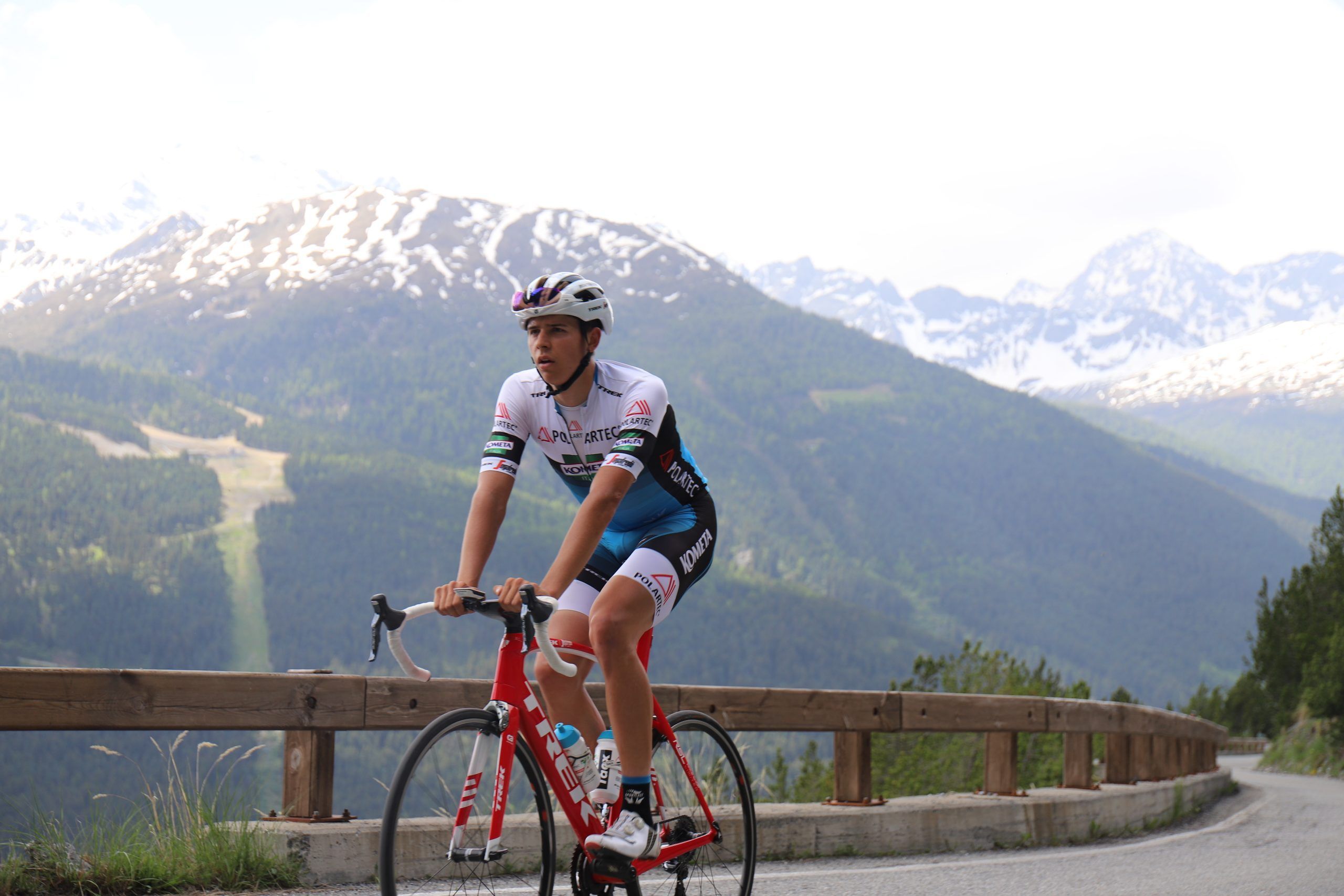 Such are the wires of the Polartec-Kometa during their pre-Giro d’Italia U23 training camp at the Rezia Hotel in Bormio. “The two wheels and tourism are an ideal combination to appreciate the scenic, naturalistic and artistic beauty of the territory”, proclaimed Lara Magoni, Minister of Tourism, Territorial Marketing and Fashion of Lombardy, during the staging of the Fundación Alberto Contador in Milan. Magoni valued physical activity and its implications for accommodation, catering and local employment. And he’s right about that. At the same time, the best testing ground for riding Trek bikes, for squeezing Polartec fabrics and for honouring the small homeland of the owners of Kometa.
Such are the wires of the Polartec-Kometa during their pre-Giro d’Italia U23 training camp at the Rezia Hotel in Bormio. “The two wheels and tourism are an ideal combination to appreciate the scenic, naturalistic and artistic beauty of the territory”, proclaimed Lara Magoni, Minister of Tourism, Territorial Marketing and Fashion of Lombardy, during the staging of the Fundación Alberto Contador in Milan. Magoni valued physical activity and its implications for accommodation, catering and local employment. And he’s right about that. At the same time, the best testing ground for riding Trek bikes, for squeezing Polartec fabrics and for honouring the small homeland of the owners of Kometa.
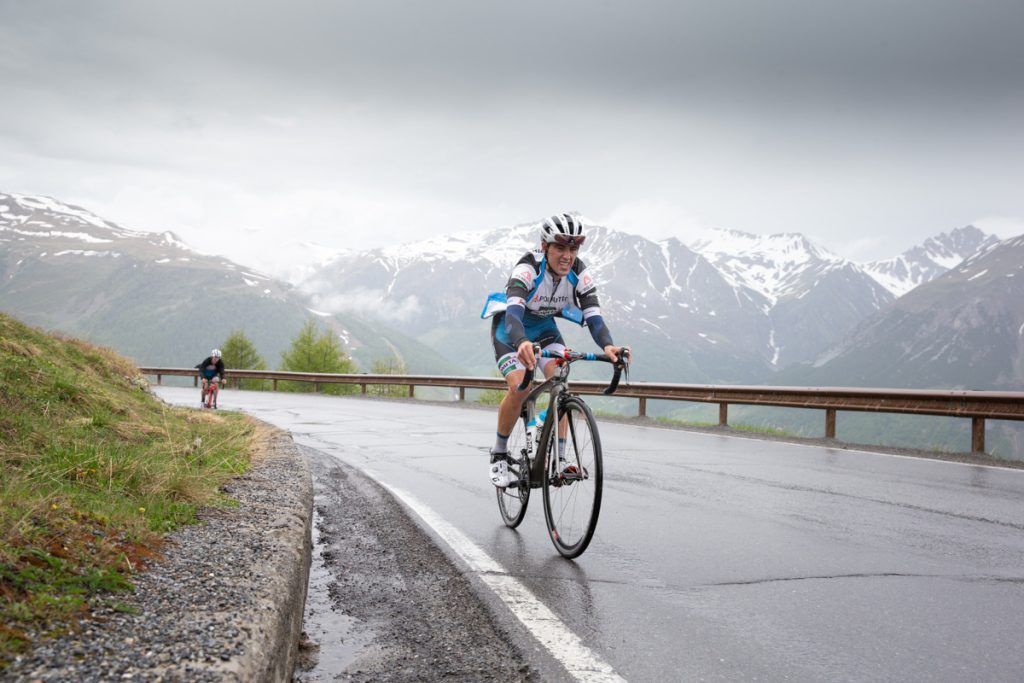 The Stelvio, the Gavia or the Mortirolo, ports that the Giro has introduced into the universal collective imagination, are some of the attractions of the area. The most media-friendly. Many people have the Valtellina, and especially the Bormio area, in mind for the Stelvio, the Gavia, the Mortirolo. Myths of this sport. “And it’s logical,” admits Italian Daniele Cantoni, a Polartec-Kometa U23 rider from Bormio and a guide for the rest of the squad during these days of training. “They are the best known. But this area is much more than these three giants. And for many more levels. In fact, I would say that there are harder than the Mortirolo, but they are not as public”.
The Stelvio, the Gavia or the Mortirolo, ports that the Giro has introduced into the universal collective imagination, are some of the attractions of the area. The most media-friendly. Many people have the Valtellina, and especially the Bormio area, in mind for the Stelvio, the Gavia, the Mortirolo. Myths of this sport. “And it’s logical,” admits Italian Daniele Cantoni, a Polartec-Kometa U23 rider from Bormio and a guide for the rest of the squad during these days of training. “They are the best known. But this area is much more than these three giants. And for many more levels. In fact, I would say that there are harder than the Mortirolo, but they are not as public”.
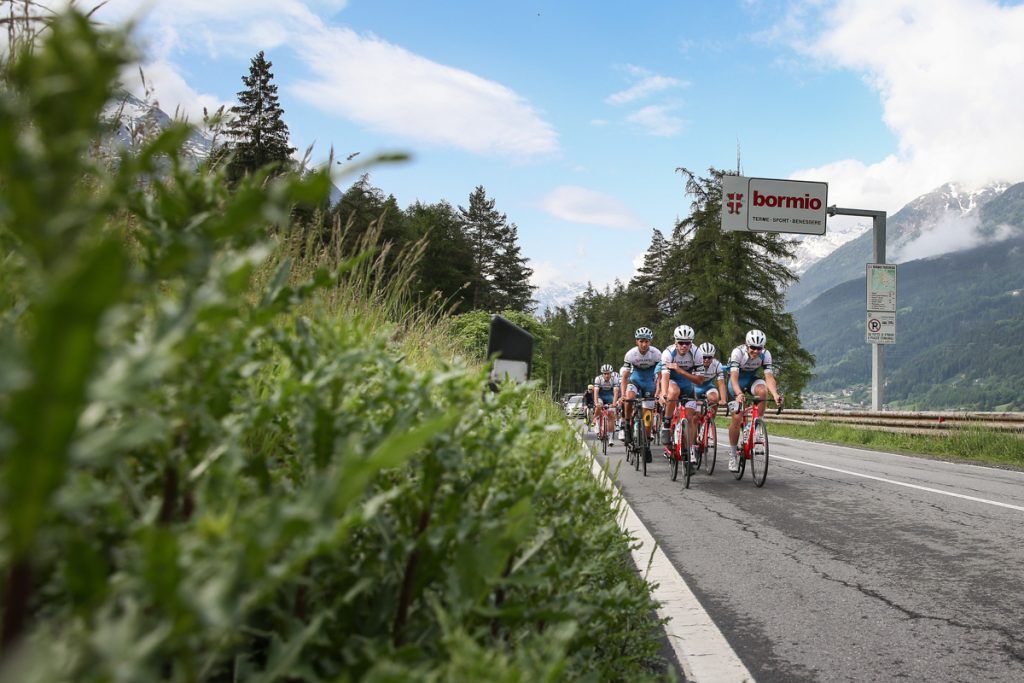 Big words. Cantoni explains a couple of suggestions: “On the route to the Gavia, for example, if instead of going to the right you take the left, you go up to the Ghiacciaio dei Forni. From Santa Caterina di Valfurva you have four, five constant kilometers at 15 and 16%; and you reach more than 2,100 meters. It combines beauty, hardness and height. From Tirano, for example, you can go in the direction of the village of Baruffini and then continue uphill towards the Swiss border for an average of 10 or 11 kilometres, more than 10% on average. Proposed on many occasions surrounded by mountains of more than 3,000 meters. Bormio, at an altitude of 1,200 metres, sits in an environment of great heights. The Monte Confinale, the Cresta di Reit, the Monte Sumbraida, the Cima Piazzi, the Cime Redasco, the Monte Vallecetta, the Corno di Profa… And many more in the vicinity. Here the earth caresses the sky as in few places in Europe.
Big words. Cantoni explains a couple of suggestions: “On the route to the Gavia, for example, if instead of going to the right you take the left, you go up to the Ghiacciaio dei Forni. From Santa Caterina di Valfurva you have four, five constant kilometers at 15 and 16%; and you reach more than 2,100 meters. It combines beauty, hardness and height. From Tirano, for example, you can go in the direction of the village of Baruffini and then continue uphill towards the Swiss border for an average of 10 or 11 kilometres, more than 10% on average. Proposed on many occasions surrounded by mountains of more than 3,000 meters. Bormio, at an altitude of 1,200 metres, sits in an environment of great heights. The Monte Confinale, the Cresta di Reit, the Monte Sumbraida, the Cima Piazzi, the Cime Redasco, the Monte Vallecetta, the Corno di Profa… And many more in the vicinity. Here the earth caresses the sky as in few places in Europe.
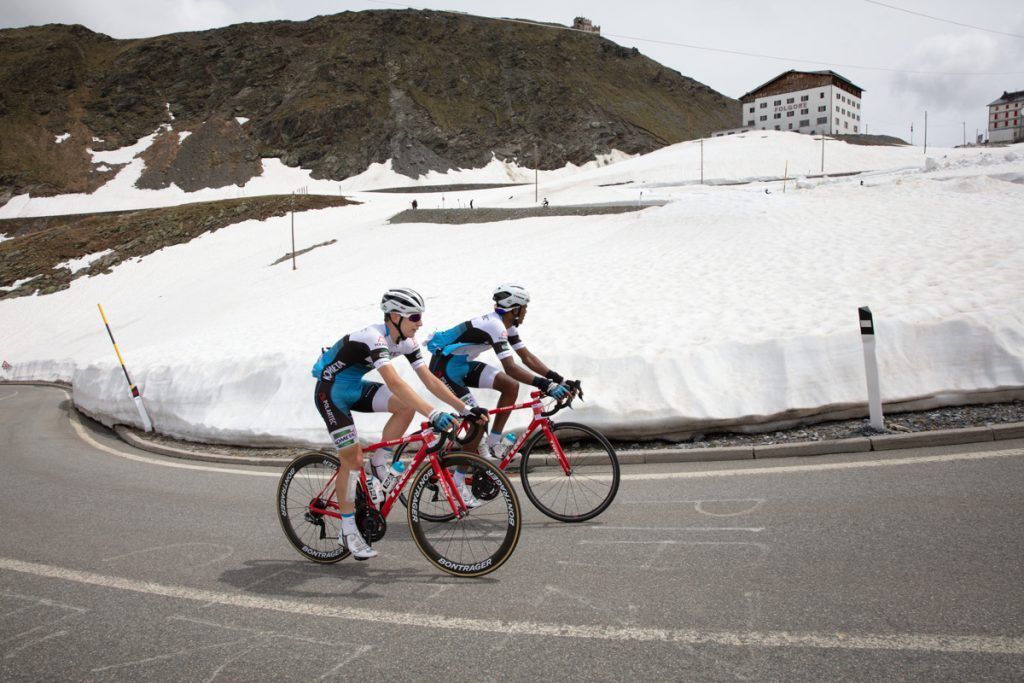 Beautiful landscapes in the Valtellina. Many feed the Stelvio National Park, a natural treasure of great fauna and environmental value that almost touches 4,000 meters at its highest point (Monte Ortles) and goes down to 700 meters at its lowest point; an enclave where 8.7% of its entire extension is occupied by glaciers and perpetual snow, where there are more than 90 lakes and where almost 36% of its surface is wooded. “It’s really an experience to be able to pedal around here,” says Juan Pedro Lopez in his debut as a Polartec-Kometa Team rider. “These landscapes are a wonder,” he adds. “And hard, there’s hard ground here.” Eritrean Awet Habtom enjoys looking around a lot. “It’s just wonderful.” This type of concentration is kind to relaxation, impossible in competition. Many runners are discovering in person places they do know as amateurs. The stops feed many selfies. These are settings that need to be immortalized.
Beautiful landscapes in the Valtellina. Many feed the Stelvio National Park, a natural treasure of great fauna and environmental value that almost touches 4,000 meters at its highest point (Monte Ortles) and goes down to 700 meters at its lowest point; an enclave where 8.7% of its entire extension is occupied by glaciers and perpetual snow, where there are more than 90 lakes and where almost 36% of its surface is wooded. “It’s really an experience to be able to pedal around here,” says Juan Pedro Lopez in his debut as a Polartec-Kometa Team rider. “These landscapes are a wonder,” he adds. “And hard, there’s hard ground here.” Eritrean Awet Habtom enjoys looking around a lot. “It’s just wonderful.” This type of concentration is kind to relaxation, impossible in competition. Many runners are discovering in person places they do know as amateurs. The stops feed many selfies. These are settings that need to be immortalized.
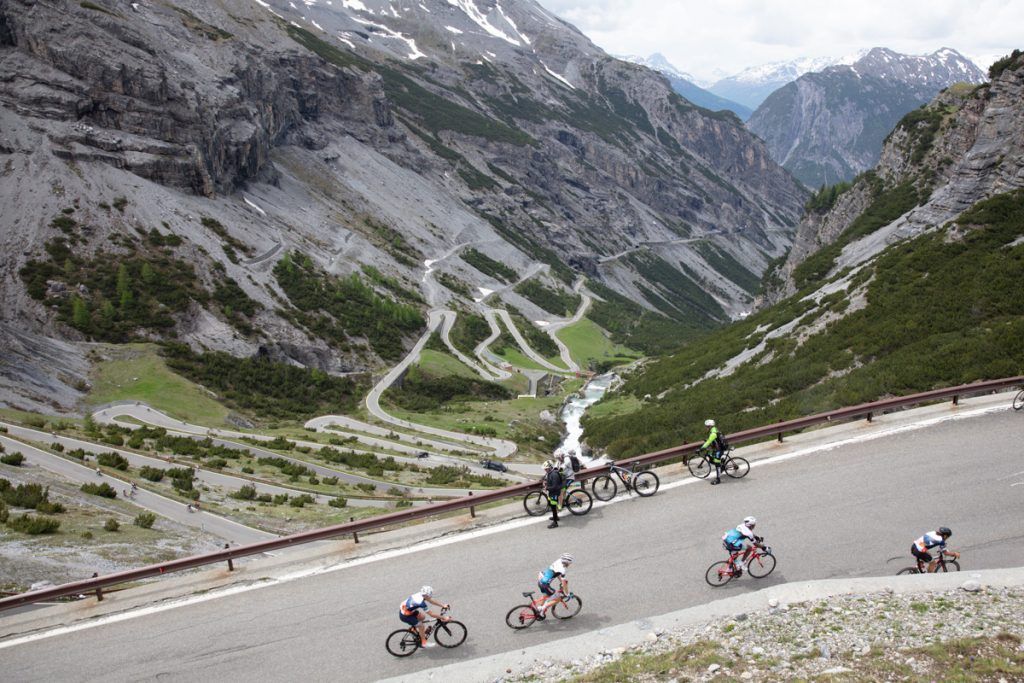 But the Valtellina, this area, is much more than Stelvio, Gavia and Mortirolo. “Within a 30-kilometer radius you can cope with 70 to 80 climbs. And many of them have two sides, or three sides. Many are still virgin for professional cycling, some would be difficult to introduce because of the logistics,” says Cantoni. The Bormini runner has grown up in these mountains, has climbed them dozens of times. In them his dream of taking the leap to professionalism matures. As a road-centred cyclist he has been riding since 2012. As a bicycle rider, a lifetime. It’s child’s play. “When we were kids, the usual with friends, we’d go out there. On days when we didn’t have class, we did some routing. Maybe we would spend three or four hours climbing, get to the place in question, have a sandwich and then get off. Going down is always more fun,” he laughs.
But the Valtellina, this area, is much more than Stelvio, Gavia and Mortirolo. “Within a 30-kilometer radius you can cope with 70 to 80 climbs. And many of them have two sides, or three sides. Many are still virgin for professional cycling, some would be difficult to introduce because of the logistics,” says Cantoni. The Bormini runner has grown up in these mountains, has climbed them dozens of times. In them his dream of taking the leap to professionalism matures. As a road-centred cyclist he has been riding since 2012. As a bicycle rider, a lifetime. It’s child’s play. “When we were kids, the usual with friends, we’d go out there. On days when we didn’t have class, we did some routing. Maybe we would spend three or four hours climbing, get to the place in question, have a sandwich and then get off. Going down is always more fun,” he laughs.
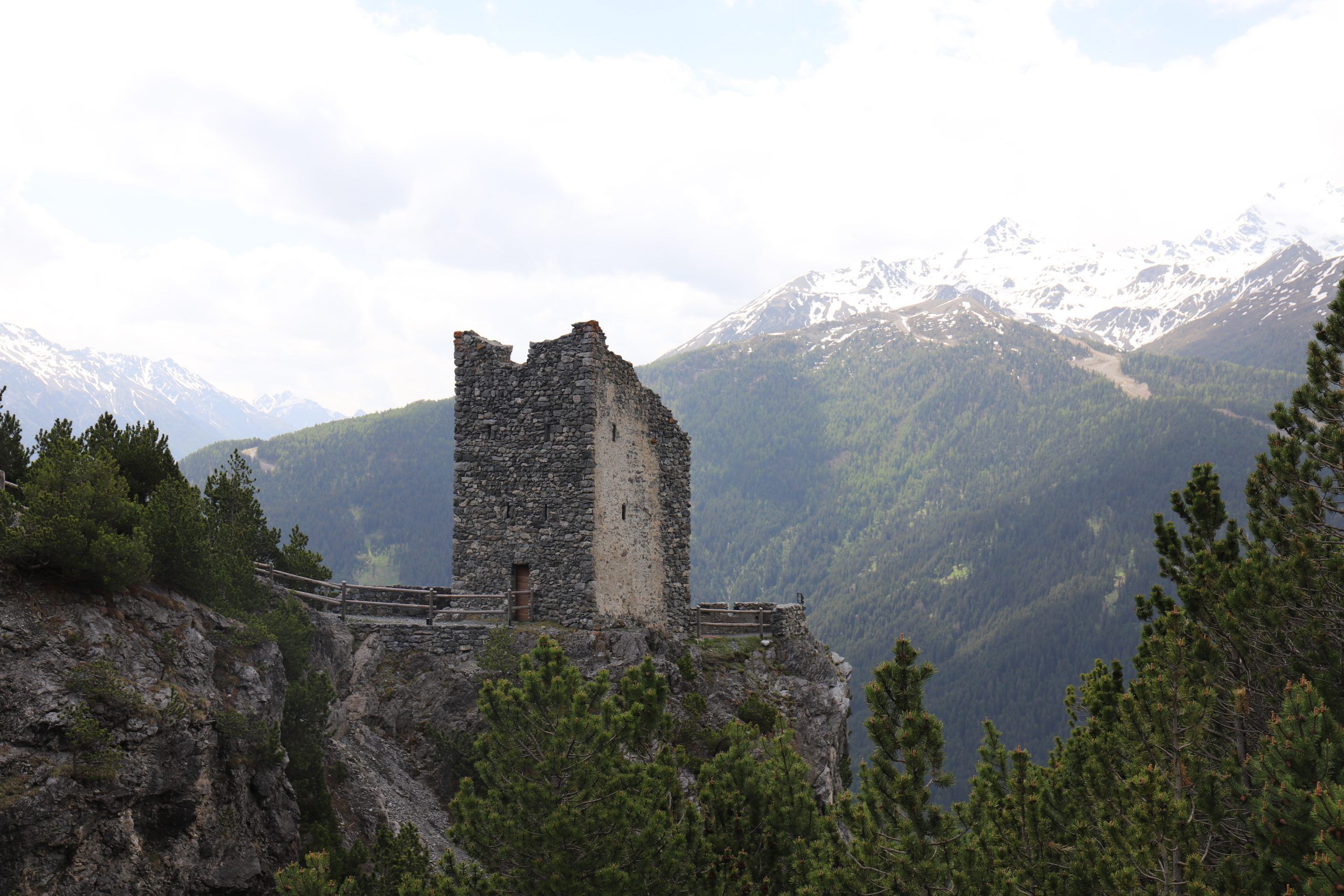 With this stage of preparation of the continental team, in which he is also accompanied by the Alicante U23 rider Jorge Pastor, Cantoni admits that he is living a much more than special experience: “Being here with the team, at home, motivates me much more. Everyone here knows me. It’s a really nice thing to be here”. On the first day, in addition to the most famous Bormio 2000, final in 2004 of a stage of the Giro d’Italia of only 118 km, Cantoni led his teammates to a climb not particularly well known, although it was trodden by professional female cycling (the eighth stage of the Giro Donne 2011): the ascent to the Torri de Fraele and the Lago di Cancano through the old winding route that rises from the valley, linking horseshoes, offering a new view at every turn and surprising the respectable with a couple of tunnels dug into the rock during the First World War. “Many of the team came to this area for the first time and, yes, during the route they asked me questions about which mountain that was or what that place was called…. They wanted to know the thing,” he explains.
With this stage of preparation of the continental team, in which he is also accompanied by the Alicante U23 rider Jorge Pastor, Cantoni admits that he is living a much more than special experience: “Being here with the team, at home, motivates me much more. Everyone here knows me. It’s a really nice thing to be here”. On the first day, in addition to the most famous Bormio 2000, final in 2004 of a stage of the Giro d’Italia of only 118 km, Cantoni led his teammates to a climb not particularly well known, although it was trodden by professional female cycling (the eighth stage of the Giro Donne 2011): the ascent to the Torri de Fraele and the Lago di Cancano through the old winding route that rises from the valley, linking horseshoes, offering a new view at every turn and surprising the respectable with a couple of tunnels dug into the rock during the First World War. “Many of the team came to this area for the first time and, yes, during the route they asked me questions about which mountain that was or what that place was called…. They wanted to know the thing,” he explains.
“Tough? No doubt about it. But it’s also a lot of fun,” concludes Miguel Ángel Ballesteros.
(automatic translation, sorry for mistakes)
? Fundación Contador & Roby Trab


































